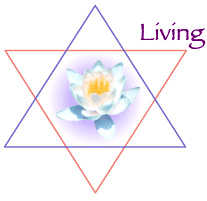|
||||||||||||||||||||||||||||||||||||||||||||||
|
|
|||||||||||||||||||||||||||||||||||||||||||||
Let us remind that yoga means union, and this concept may be interpreted in many ways : union of body and mind, balance between the sympathetic and parasympathetic nervous systems, simultaneous use of both cerebral hemispheres, union of the solar and lunar energies, of feminine and masculine, of the individual and the cosmos. |
||
When the teacher has deepened his understanding and his experience for himself, the simplicity of a basic class may also be the opportunity to express the deepest meaning of yoga. |
||
|
||
A yoga class should combine techniques for body, energy and mind. Only then can the fundamental aim of yoga be fulfilled, while respecting the demand of participants. This leads to the association of postures or asanas, breathing exercises or pranayama, a relaxation technique or yoga nidra, and for more advanced students, a simple meditation technique for channelling the mental forces without creating a vain struggle within the mind. |
||
Asanas are not gymnastic exercises, their aim is physical health, stability and comfort, but they have to be done with proper breathing, having concern to respect the body and to create a specific attitude, with relaxation and awareness. Without this support of breath and awareness, a movement remains a mere exercise, it may bring suppleness and a momentary well-being, but it is not yoga. Each posture should harmonize body and mind, using the breath as a medium, allowing self-observation and encouraging the yogic attitude of being rather than doing. |
||
Pranayama should respect precise rules and never go beyond the respiratory capacity of the participants. Breathing exercises are sometimes used as a way to transcend the ordinary awareness and to dive into different dimensions of consciousness. This is probably the reason which explains the cautious attitude of many western schools and federations. Pranayama is a set of wonderful techniques provided the teacher follows its process and ensures an easy way by a slow and methodical progression. It's a pity to deprive the students of pranayama ! It could give them very efficient tools to promote a better health and to deal with their mind in an indirect manner. |
||
Relaxation is essential in a yoga class. There are short relaxation techniques and also the deep one known as yoga nidra, finalized by Swami Satyananda, which aims at relaxing the whole personality. The yoga nidra practice relieves tensions at physical, energetical, emotional, mental and psychic levels. It is the panacea to deal with stress and psycho-somatic deseases. |
||
Meditation is another tool that can be learned when relaxation is sufficient. Tantric meditations, as taught by Swami Satyananda and Swami Niranjananda, respect the mind, do not enforce it to be concentrated or silent but aim to have a friendly attitude towards one's self. They are very efficient to slowly channel the mind without fighting with it and to provide self-knowledge. |
||
|
||
A yoga teacher should avoid identifying with his role of teacher. Otherwise, he blocks his own evolution process and becomes ossified in what he knows. He should also keep his mental clarity when confronted with the students and he should not be influenced by their reactions whatever they are, praises or critics. When the door of learning remains open, one maintain the humbleness of a student in charge of conveying the tools of yoga in the simplest way. That is why the teacher should remain in a personal move and follow his own sadhana with regularity, including different techniques of hatha yoga, yoga nidra and meditation, as well as a method of self-knowledge. |
||
" In order to excell as a yoga teacher, after the training you have to identify with the principles of yoga rather than with the pratices. Teach people the practices of yoga, but for yourself practise the principles of yoga. " |

